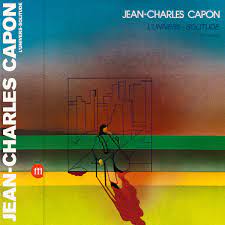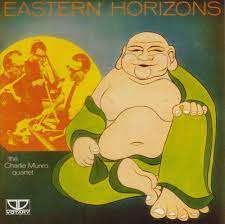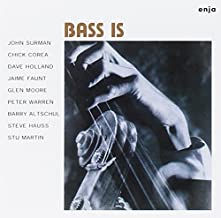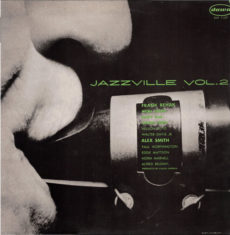
Daily Dose Of Jazz…
Jean-Charles Capon was born on July 29, 1936 in Vichy, France. A virtuoso on the cello, he began playing professionally at the beginning of the 60s before creating the Baroque Jazz Trio. His name was rapidly linked to different cult groups for whom he became the guest star for Confluence, Perception, and Speed Limit, but also with many more or less well-known free jazz musicians including David S. Ware with whom he recorded the impeccable duo From Silence To Music, as well as Philippe Maté, Michel Roques, André Jaume or Joe McPhee with Po Music.
Jef Gilson helped get his career under way (they recorded together as far back as 1968) before Pierre Barouh, owner of Saravah Records with whom Jean-Charles played alongside Brigitte Fontaine and Areski. He offered him the opportunity to record his first album: L’Univers-solitude.
Capon admired Duke Ellington, John Lewis and Gabriel Fauré, as can be heard on his later highly personal versions of Mood Indigo, Django and Après un rêve. As for Pierre Favre, he is not there just to make up the numbers: his timbral research and combinations of complex rhythms offer the French cellist wonderful interaction throughout this remarkable album which had finally been given a dignified rerelease.
The fluidity of the phrasing, timbral research, complex rhythmic combinations and rare sense of improvisation make this one of the best modern jazz recordings on the Saravah label in the 1970s.
Cellist Jean~Charles Capon transitioned on August 22, 2011 in the 10th Arrondissement, Paris, France.
More Posts: bandleader,cello,history,instrumental,jazz,music

Daily Dose Of Jazz…
Charles Robert Munro was born on May 22, 1917 in Christchurch, New Zealand. While in his teens he became quite proficient on several saxophones and by 21 had moved to Sydney, Australia where he played in the bands led by Myer Norman and Wally Parks. In addition he worked as a sideman on various nightclub, theater, and ship gigs.
Serving in the military during World War II, Charlie went on to work with Wally Norman at the Roosevelt nightclub in Sydney. In 1950 he played with Bob Gibson, then joined the Australian Broadcasting Commission’s dance band in 1954, continuing to perform with the group through 1976 as a composer and arranger.
He worked extensively with Bryce Rohde in the 1960s, participating in many of Rohde’s Australian jazz experiments. He led his own bands toward the end of his career, and also worked with Georgina de Leon.
Saxophonist and flutist Charlie Munro, who also played the cello and delved into free jazz movement, transitioned on December 9, 1985, in Sydney.
More Posts: arranger,bandleader,cello,composer,flute,history,instrumental,jazz,music,saxophone

Daily Dose Of Jazz…
Arthur “Artie” Bernstein, born February 4, 1909 in Brooklyn, New York, started his musical career playing cello on board cruise ships to South America. He studied law at New York University, however, by 1929 he had started playing bass, and began performing in clubs around New York City. He performed with trumpeter Red Nichols, Red Norvo and others, and recorded with Ben Pollack, Jimmy and Tommy Dorsey, and many others in the 1930s.
In 1939 he performed with Benny Goodman at the second From Spirituals to Swing concert. He fell out with Goodman in 1941 after the bandleader fiddled with Bernstein’s music-stand light so that he would have problems reading the music to appear incompetent, giving the pretext to fire him.
He went on to win the Down Beat readers’ poll in 1943 and later moved to Los Angeles, California. Artie worked in the film industry for Universal Studios and Warner Bros., continuing to work for the latter organization until 1963.
Over the course of his career he worked with Arnold Ross Quintet, Charlie Christian Jammers, Hoagy Carmichael Trio, Ralph Burns Quintet, as well as the orchestras of Adrian Rollini, Billie Holiday, Cloverdale Country Club, Clyde Hurley, Cootie Williams, Eddie Condon, Frankie Trumbauer, Harry James, Jack Teagarden, Larry Clinton, Lionel Hampton, Metronome All Stars, Mildred Bailey And Her Swing Band, Putney Dandridge, Teddy Wilson, and Ziggy Elman.
Double bassist and cellist Artie Bernstein transitioned on January 4, 1964 in Los Angeles, one month to the day shy of his 55th birthday.

Daily Dose Of Jazz…
Peter Warren was born November 21, 1935 in Hempstead, New York and learned to play the cello as a child, studying the instrument formally, giving a recital at Carnegie Hall in 1953. After studying at Juilliard School, he went on to play with the Atlanta Symphony Orchestra before switching to double-bass and studying jazz under Chuck Israels.
From 1965, for two years Peter was Dionne Warwick’s touring bassist, and following this, he played with David Izenzon in the New York Bass Revolution. Working in Belgium in the early Seventies, he played with Chick Corea, John Surman, Rolf Kuhn, Joachim Kuhn, Jean-Luc Ponty, Don Cherry, Terumasa Hino, Masahiko Sato, Albert Mangelsdorff, John Tchicai, Anthony Braxton, and Tomasz Stańko.
Settling once again back in the United States in 1974, he played with Jack DeJohnette and Carla Bley, and in 1976 he received a National Endowment for the Arts grant in cello composition. The early Eighties saw him working with Mike Stern, Ken Vandermark, and again with DeJohnette. He recorded three albums as a leader Bass Is on Enja Records in 1970, Solidarity for JAPO Records, in 1981, and Bowed Metal Music in 2001. Cellist and bassist Peter Warren continues to perform.
More Posts: bandleader,bass,cello,history,instrumental,jazz,music

Daily Dose Of Jazz…
Frank Rehak was born on July 6, 1926, in New York City and started on piano and cello before switching to trombone. He was a member of the Gil Evans band and worked with Miles Davis, appearing with Davis on the broadcast The Sounds of Miles Davis.
As a leader he recorded Jazzville Vol. 2 on the Dawn label but as a sideman he had a prolific career. He recorded with Tony Bennett, Al Cohn, Dizzy Gillespie, Woody Herman, Quincy Jones, Gene Krupa, Hugo Montenegro, Cat Anderson, Ernestine Anderson, Charlie Barnet, Big Maybelle, Art Blakey, Bob Brookmeyer, Ruth Brown, Cándido Camero, Chris Connor, Urbie Green, Johnny Hartman, Michel Legrand, Melba Liston, Mundell Lowe, Teo Macero, Carmen McRae, Red Mitchell, Whitey Mitchell, Blue Mitchell, André Previn, Gerry Mulligan, Kai Winding and the list goes on.
Along with a failed marriage to nightclub dancer Jerri Gray, he also had a heroin addiction, which combined with other financial problems led to his withdrawal from music. With that, he lapsed into relative obscurity.
In an effort to deal with these issues he spent time at Synanon, which led to his mention in Art Pepper’s autobiography. Trombonist Frank Rehak passed away on June 22, 1987 in Badger, California.
More Posts: bandleader,cello,history,instrumental,jazz,music,piano,trombone






